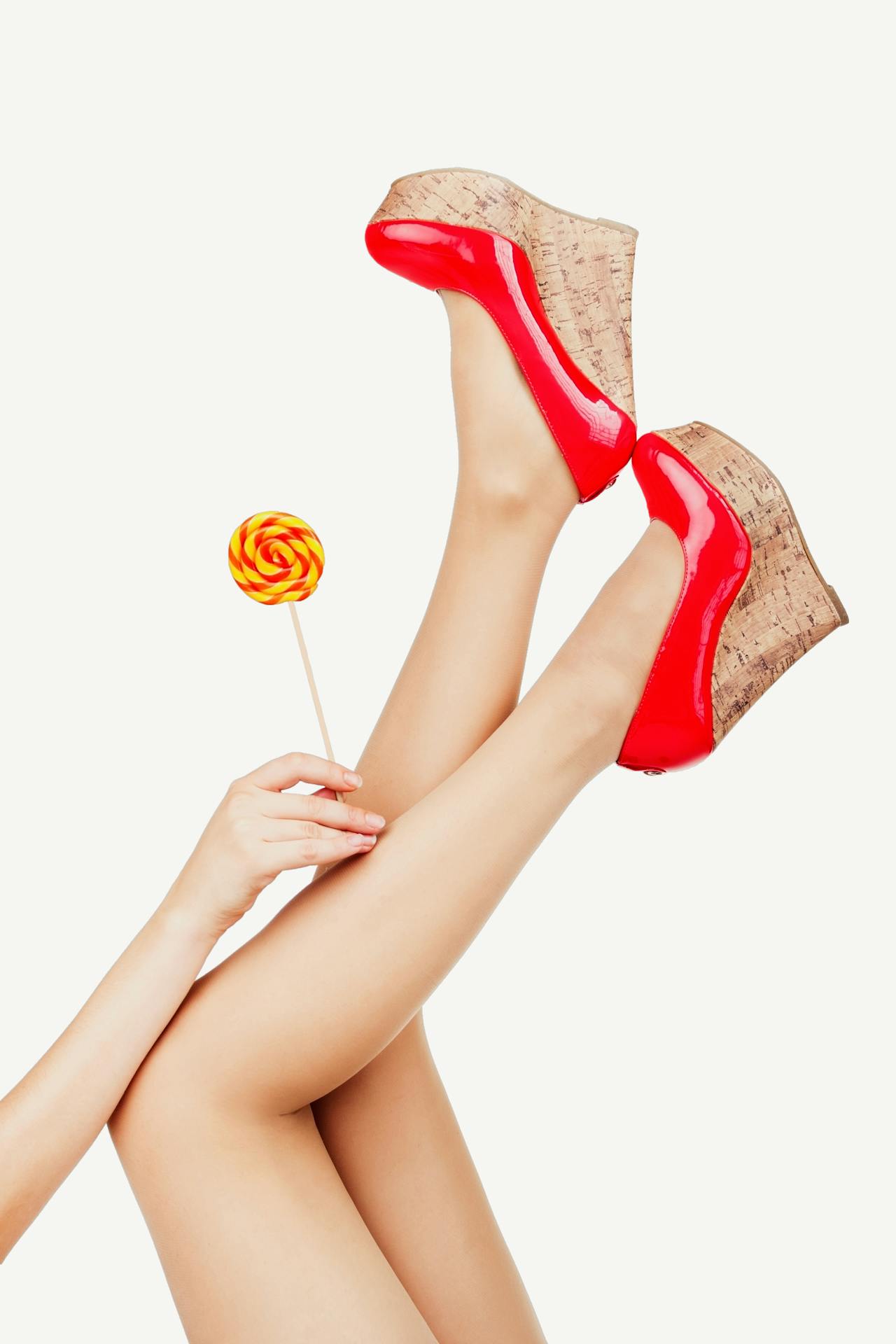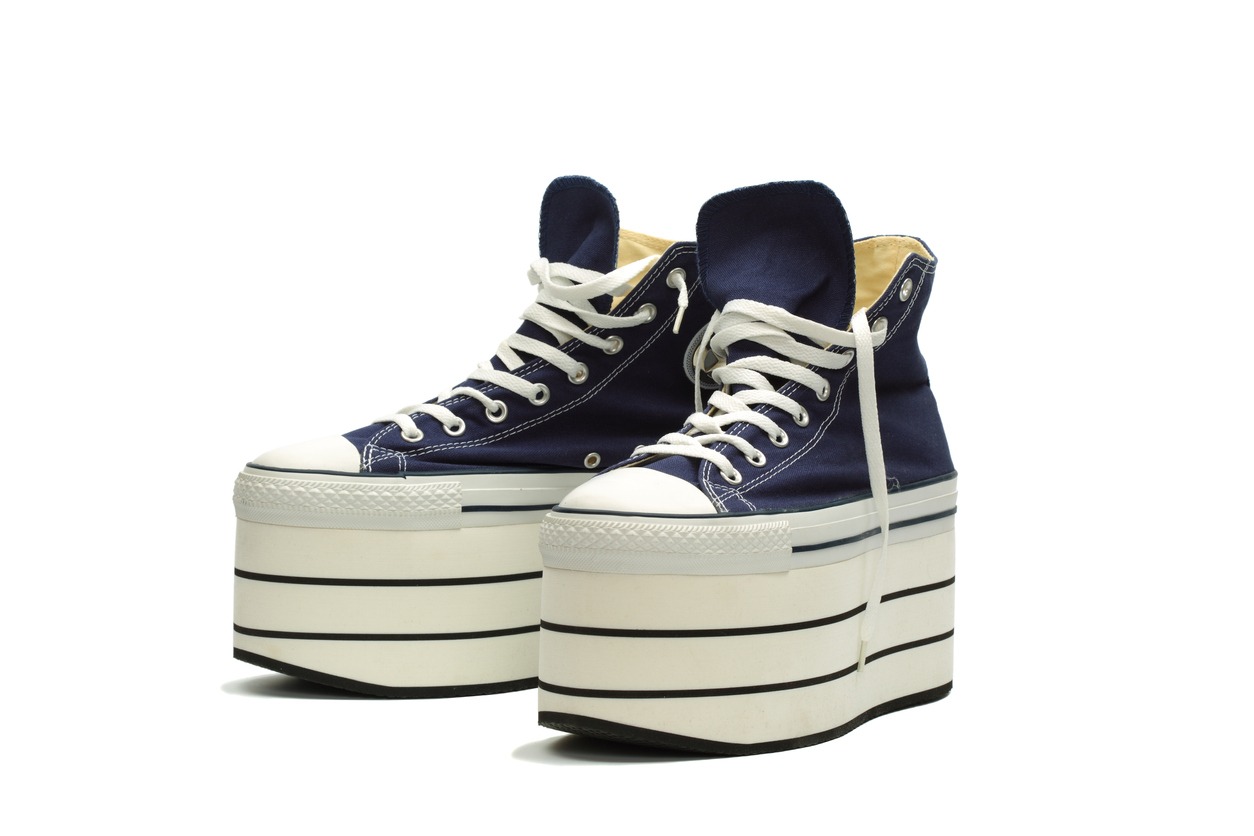Platform shoes, a style statement that has seen waves of popularity over the decades, are once again on the rise. These shoes, characterized by their thick soles, often add several inches to one’s height and can be found in various designs, from sleek high heels to casual sneakers. However, as their popularity grows, so do concerns about their safety.
Platform shoes are shoes, boots, or sandals with a thick sole that is usually 3–10 cm thick. Platform shoes can also be high heels, which have a heel that is much higher than the ball of the foot. The soles and heels of fetish footwear, such as ballet boots, can be up to 20 cm high and the heels up to 40 cm or more. A platform shoe’s sole can be a single continuous thickness, a wedge, a separate block, or a stiletto heel. A sprained ankle is more likely when the ankle is raised. Platforms have gone in and out of style over the years, but the present forecast says they’re back in style. They are a more relaxed alternative to high heels that force your foot into an awkward position. They give you height without the teetering.
History of Platform Shoes
When people seem to think of platform shoes, they might think of those worn by rockers and disco freaks in the 1960s and 1970s. So, it is better to know the history of platform shoes. Kiss, David Bowie, Cher, and others are among the famous platform wearers. However, the history of the shoe goes back much further.
Many people believe they originated in Ancient Greek theater when the main characters would appear in elevated shoes to demonstrate their status in the play. However, thick-soled shoes have been in and out of fashion throughout history, and any of these styles could be said to have influenced modern fashion. Geishas wore thick-soled shoes called maikos to give them extra height in the 14th and 17th centuries, and Lebanese women wore bulky-heeled Kabkabs in the 14th and 17th centuries. Moshe Kimel, who designed platforms for Marlene Dietrich in the 1930s, was the first to design them. They became popular among the Beverly Hills elite, but not commercially until 20-30 years later. IN fact there is a fashion movement to bring back the 90s with platform shoes.
Types of Platforms
Each of these type of platform shoes offers a different balance of style, comfort, and stability, catering to various preferences and occasions. When choosing platform shoes, it’s important to consider not only the style but also the comfort and practicality for your needs.
- Classic Platform Heels: These are characterized by a thick sole under the front part of the foot and a heel that’s higher than the platform. They offer height while trying to maintain comfort.
- Wedge Platforms: Wedge platforms have a sole in the form of a wedge, meaning there’s no separation between the heel and the rest of the shoe. This design offers more stability than traditional platform heels.
- Flatforms: Flatforms have a thick, flat sole that maintains a consistent height from toe to heel. They provide the height of platforms without the angle and pressure of heels.
- Platform Boots: These can range from ankle to knee-high boots and incorporate a thick platform sole. They’re often popular in winter or as a fashion statement.
- Platform Sandals: Open-toed and perfect for warmer weather, these sandals have a platform sole and vary in style from casual to dressy.
- Sneaker Platforms: Combining the comfort of sneakers with the height of platforms, these shoes are often casual and sporty, suitable for everyday wear.
- Gothic or Punk Platforms: Often found in alternative fashion scenes, these platforms can be quite elaborate, with additional elements like buckles, spikes, or unique shapes.
- Designer Platforms: High-end fashion brands often have their take on platform shoes, which can include unique designs and luxury materials.
- Chunky Platforms: These platforms are notable for their very thick soles and are often seen in bold, statement-making designs.
- Platform Loafers and Oxfords: These are traditional loafer or oxford shoes with an added platform sole, combining classic style with modern trends.
The Risks of Wearing Platform Shoes
1. Increased Risk of Falls and Injuries
The most significant risk associated with platform shoes is the increased likelihood of falling. The elevated and often uneven base can lead to a loss of balance, making wearers more prone to trips and stumbles. This risk is particularly high in platform heels, where the elevation is combined with the instability of a heel.
2. Ankle Strains and Sprains
Wearing platforms can put additional strain on your ankles. The height of the platform can create an unnatural angle for your feet, leading to increased pressure on your ankles. This can result in sprains or even more severe injuries, especially if you twist your ankle while wearing them.
3. Posture and Gait Alterations
Elevated shoes can alter the way you walk and stand, potentially leading to posture issues. Over time, this can cause back pain and discomfort, especially if the platforms are worn frequently and for extended periods.
4. Potential for Long-Term Foot Damage
Regularly wearing platform shoes can lead to foot pain and deformities. Conditions like hammertoes and bunions may be exacerbated or even caused by frequently wearing ill-fitting or unsupportive shoes.
The Benefits of Platform Shoes
Despite the risks, platform shoes also offer certain advantages that contribute to their enduring popularity.
1. Added Height and Confidence
One of the most appealing aspects of platform shoes is the instant height boost. This can be a significant confidence booster for many, helping them feel more assertive and empowered.
2. Fashion Statement
Platform shoes can be a bold fashion statement. They come in various styles, colors, and designs, making them a versatile addition to almost any outfit.
3. Comfort Over Traditional Heels
Compared to traditional high heels, platforms can offer more comfort and stability. The sole’s thickness can provide better cushioning, which is helpful when standing or walking for extended periods.
4. Improved Visibility
For events in crowded places, the added height can improve visibility, which might be a practical advantage for some.
Making Safe Choices
If you decide to wear platform shoes, consider the following tips to minimize risks:
- Start with Low Heights: If you’re new to platforms, start with a lower height and gradually work your way up.
- Choose Wide Bases: Platforms with a wider base can offer better stability.
- Practice Walking: Spend time practicing your walk in platforms at home to get used to the balance and feel.
- Limit Wear Time: Avoid wearing platforms for extended periods, especially if you’ll be walking or standing a lot.
Final Thoughts
Platform shoes, like any fashion choice, come with their set of risks and benefits. While they offer a unique style and additional height, it’s crucial to be aware of the potential for injury and discomfort. By making informed choices about the type of platform shoes you wear and how often you wear them, you can enjoy the fashion statement they make while minimizing the risks. Remember, fashion should never compromise your health and safety.



